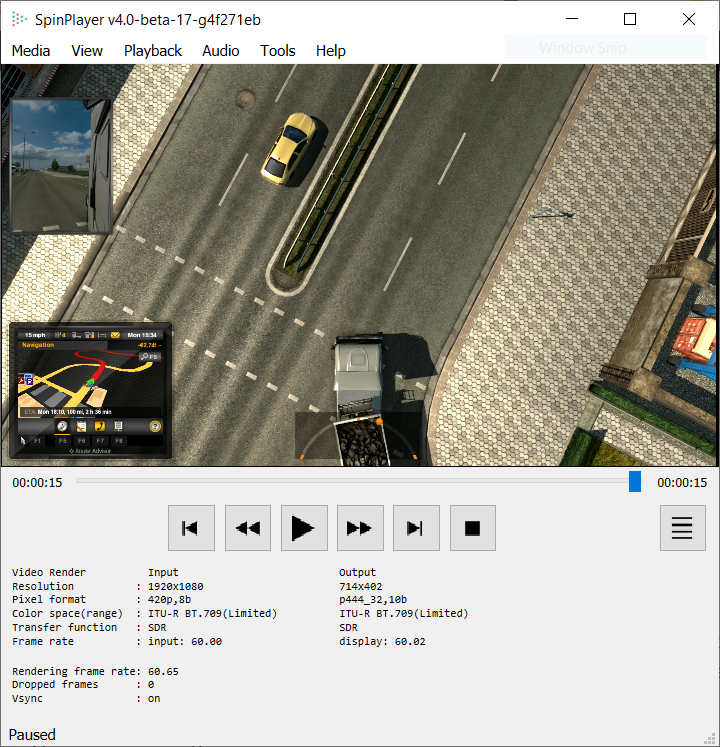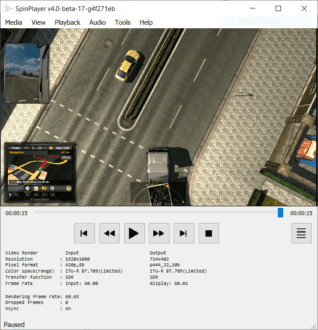The last time I looked at VVC playback in software was for this article in Streaming Media Magazine. Fraunhofer’s VVDec decoder delivered an uninspiring 39 frames per second when converting the input file to YUV. This was on a (then) nine year old i7-based HP desktop. I just retested with a version of FFmpeg that Fraunhofer supplied, and this number shot to 154 frames per second.

Note that LCEVC throttles playback speed to preserve battery life, so VVC was not nearly as efficient as LCEVC or any of the other codecs shown on the left, which I haven’t updated. I also haven’t updated EVC since very little has happened with EVC since 2021. Still, a nearly 5x jump for VVC is quite impressive.
Also impressive is Spin Digital’s VVC Media Player (Spin Player VVC) playing back EuroTruckSImulator2 at full 1080p60 frame rate on a much newer 11th Gen Intel i7-1185G7. CPU utilization was about 40% during playback, which is a bit high but obviously would drop for 24 fps and 30 fps footage. Spin Player VVC is a full-featured player as compared to FFmpeg, so the CPU utilization isn’t surprising.

In my presentation at Streaming Media East on VVC Playback, I shared stats from Fraunhofer, Tencent, Kwai, and ByteDance that showed inspiring playback frame rates on Arm-based CPUs and mobile devices. You can download that presentation here.
History has shown us that few codecs get deployed before hardware playback exists, particularly on mobile devices. With aggressive support from Alliance for Open Media members, AV1 is certainly an exception, and VVC contributors may do the same. Like the proverbial objects in the rearview mirrors, VVC playback may be closer than you think.
 Streaming Learning Center Where Streaming Professionals Learn to Excel
Streaming Learning Center Where Streaming Professionals Learn to Excel









